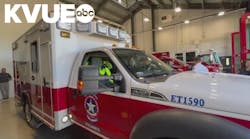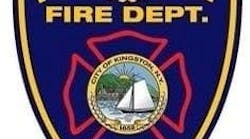“Next year” is upon us. 2011 is in the history books and 2012 is yet to be written. Sometimes I wish I could travel in time, either forward or backward, and be at that exact moment in time and place when something significant happens. What would it be like to be standing in Dealey Plaza in Dallas, TX, on Nov. 22, 1963, when President Kennedy was shot? You could be standing on the grassy knoll and actually know whether a shot came from there. How about standing in the room when General Lee surrendered to General Grant at Appomattox? What about standing in the room in Philadelphia as our Founding Fathers debated the new Constitution and then signed it?
Of course, that is all dreaming. But what about going forward in time? What will the year 2012 bring for us? It is tough to predict the future, but many times it is not necessary because we should be creating the future.
One opportunity to create the future will happen this year. In late November 2011, the Center for Medicare and Medicaid Innovation announced the Health Care Innovation Challenge. That challenge makes about $1 billion available for compelling new models of service delivery/payment that have three goals: better health, better health care and lower costs through improved quality. This is being funded under the Affordable Care Act. When President Obama signed into law the Patient Protection and Affordable Care Act and the Health Care and Education Reconciliation Act of 2010, the two laws became collectively referred to as the Affordable Care Act. This is an excellent opportunity to change the future of EMS, since EMS agencies are encouraged to apply for the grants.
The model of EMS is outdated and is in need of serious revamping. What we have today does not work. For more than 45 years, we have transported anybody who was sick or injured to an emergency room. Why do we do that? It started in 1966, when Medicare came into effect. Somewhere it was decided that if Medicare is going to reimburse ambulance services for transporting someone, that someone should go to an emergency room. Eventually, the states that provide Medicaid and private insurance companies thought that was a good thing too, and they also said that if we are going to pay for an ambulance ride, then the patient has to go to an emergency room. So, for more than four decades, we have been transporting people to emergency rooms regardless of what was wrong with them. If they have a sore throat – transport them to an emergency room. If they need a prescription refilled – transport them to an emergency room.
The introduction of 911 in 1968 in Haleyville, AL, was a good and a bad thing. The good thing is that people who truly need help in an emergency do not have to memorize a seven-digit number or look it up in a telephone book. They simply call 911. The bad thing is that emergency services have become too easily accessible to the public and people do not hesitate to use it. The end result is that some people call 911 regardless of what is wrong with them and they want to go to the hospital. And, of course, our ambulance services are not reimbursed unless we transport them to an emergency room.
Under the Health Care Innovation Challenge, however, the opportunity exists to change how we do business.
Imagine if an EMS agency applies for grant money to demonstrate that it could change the model of how we deliver EMS. Instead of taking every patient to an emergency room, we could respond to a scene and decide there whether to transport patients or treat and release them. How about evaluating patients and making clinic appointments for them, and even arranging with a taxi service to pick up a person at home and drive him or her to the clinic? How about putting a physician assistant and firefighter/paramedic in a van to respond to low-priority calls and have them treat and release non-emergency patients on the scene with a prescription for whatever they need.
Other opportunities exist in rural and remote sections of the United States where ground transport to a hospital may be two hours or greater one way. There has been a recent push to educate paramedics in rural communities to a higher level of education where physicians, clinics or hospitals do not exist. These paramedics would be trained in advanced practices in different disciplines, including primary care, public health, disease management, prevention and wellness, mental health and dental care. Imagine if paramedics in rural communities would be the primary providers, giving immunization shots and doing home inspections to prevent fall injuries and accidental poisonings, teach safe trick-or-treating practices or a variety of other preventive education.
Who knows – someone may invent a time machine and some paramedic 500 years from now will travel back in time to 2012 to see how EMS changed from an archaic and outdated model of transporting everyone to an emergency room to one that is more efficient, better for the patient and less costly to the system as a whole.






